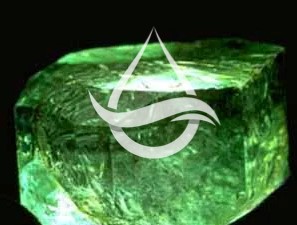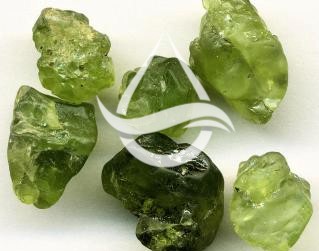Definition
Olivine is a mineral that belongs to the silicate group, specifically to the orthosilicate subclass. It is commonly found in igneous rocks such as basalt and gabbro, as well as in some metamorphic environments. This mineral derives its name from its olive-green color, which can vary from pale to dark green depending on its iron and magnesium content. Olivine is comprised of a solid solution of two different minerals, forsterite and fayalite, giving it a chemical formula of (Mg,Fe)2SiO4. The specific composition of olivine can vary depending on the ratio of these two minerals, with forsterite containing more magnesium and fayalite containing more iron.
The composition of olivine is predominantly made up of magnesium, iron, and silicon, with small amounts of other elements such as aluminum and nickel present. Magnesium and iron make up the majority of the mineral’s structure, accounting for its characteristic green color. The exact chemical make-up of olivine can be determined through various analytical techniques, such as X-ray diffraction and electron microprobe analysis. These methods allow scientists to measure the precise mineral composition and determine any impurities or variations in the mineral’s structure.
Sources
Sources of olivine are primarily volcanic and mantle environments. Olivine is a common component of basalts and gabbros, which are both igneous rocks. These rocks form from lava that cools and solidifies, or from magma that slowly crystallizes beneath the Earth’s surface. However, olivine can also be formed through metamorphic processes, where rocks are subjected to extreme heat and pressure. Metamorphism can take place deep within the Earth’s crust or in regions where tectonic forces cause rocks to be altered. Olivine appears as an accessory mineral in certain types of metamorphic rocks, such as eclogite and blueschist.
Due to its unique composition and properties, olivine has numerous applications across various industries. One of its most prominent uses is as a refractory material. Olivine’s high melting point and resistance to heat make it an ideal choice for lining furnaces and kilns, as well as in the manufacturing of refractory bricks and molds. It also possesses excellent thermal shock resistance, making it suitable for use in thermal insulation applications. Moreover, olivine is utilized in the production of ceramics and glass, where its chemical stability and ability to enhance certain properties of the finished products are valued.
Other applications
Beyond industrial applications, it also plays a role in environmental and technological sectors. It is an important mineral in the field of geology, as its presence and abundance can provide valuable information about the origin and history of rocks and geologic formations. Olivine has gained attention in recent years as a potential solution to carbon capture and storage. When weathered, olivine can absorb carbon dioxide from the atmosphere, acting as a natural carbon sink. This geological cycle makes it a promising candidate for mitigating the impacts of climate change and reducing carbon emissions. Furthermore, olivine is utilized in certain electronic devices, such as semiconductors, due to its unique thermal and electrical properties.
In conclusion
olivine is a silicate mineral composed of magnesium, iron, and silicon. Its composition can vary depending on the ratio of its main components, forsterite and fayalite. Olivine is commonly found in volcanic and metamorphic environments, where it forms as a result of cooling magma or through the alteration of rocks subjected to extreme heat and pressure. This mineral has a wide range of applications, including its use as a refractory material, in the production of ceramics and glass, and potentially as a carbon sink to combat climate change. Its unique properties and widespread availability make olivine a valuable mineral in both industrial and environmental domains.





